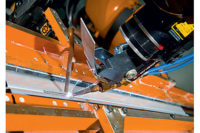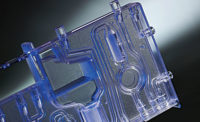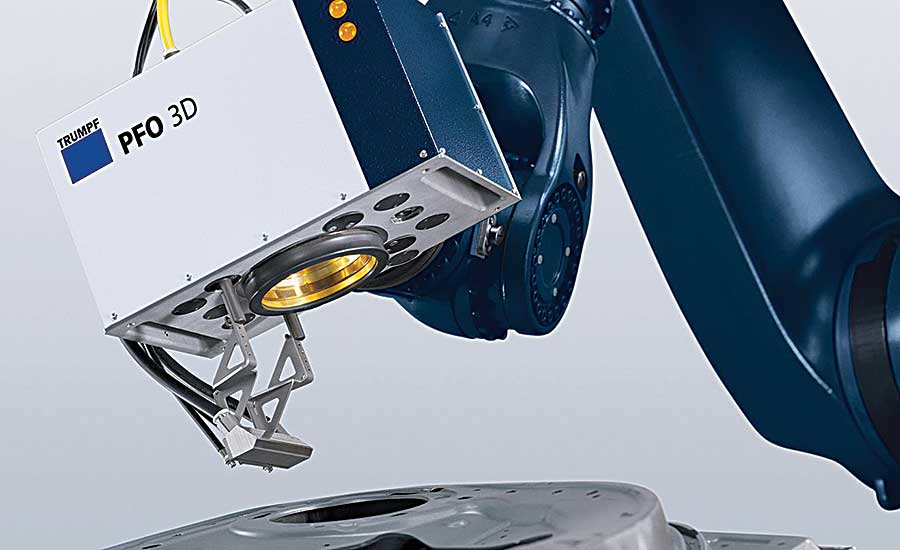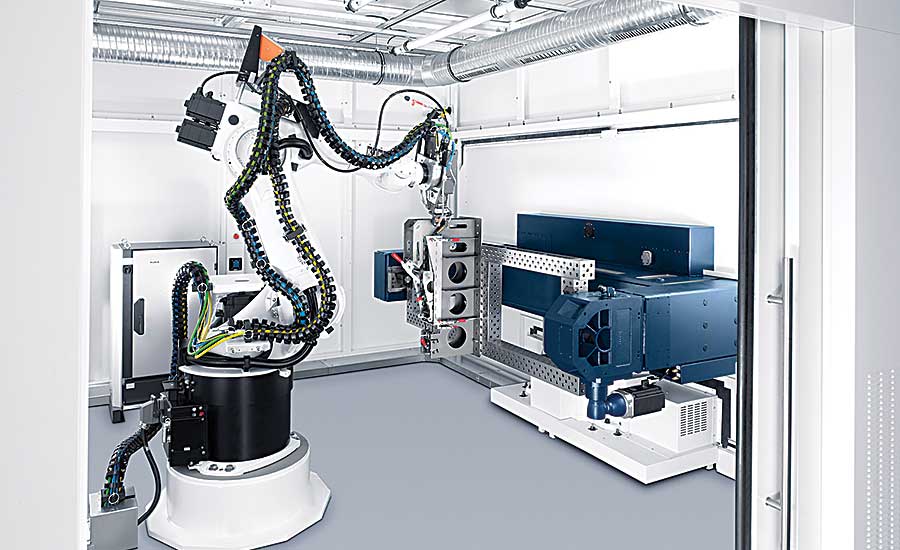Lasers for Lightweighting
Lasers are creating new possibilities for automakers to shape and join lightweight materials












Automotive OEMs worldwide are desperate to reduce vehicle weight these days. BMW is no exception.
For example, the automaker’s 2017 5 Series is 137 pounds lighter than the previous model. That weight loss is even more impressive given that the 2017 sedan is longer, wider, taller, stiffer and stronger than the 2016 model.
Cutting the vehicle’s weight required some clever engineering and greater use of high-strength steel, aluminum and magnesium. The 2016 5 Series already contained a fair amount of aluminum, including the doors, hood and front fenders. The 2017 model uses even more. Engineers redesigned the rear side member, consolidating 18 parts into a single cast aluminum part. That saved 24 pounds. An aluminum trunk lid saved 9 more. The trunk, engine cross-member and roof are also made from aluminum.
Strategic use of high-strength and ultra-high-strength steels in the roof, side members and rear, give the body high structural strength while reducing weight. And, BMW used magnesium to cast the instrument panel, rendering it 4 pounds lighter than its steel predecessor.
To assemble these materials, automakers have needed to adopt a variety of new joining technologies, including self-piercing rivets, flow-drill screws, structural adhesives, and, increasingly, laser welding.
“Lasers are another tool in the toolbox for materials joining,” says Nathan Harris, automotive industry manager at TRUMPF Inc. “Welding, fasteners, adhesives—they all have their strengths and weaknesses. There is no ‘magic bullet’ that will solve every materials joining challenge faced by automakers today.”
BMW isn’t the only automaker taking advantage of laser welding. The technology is being used on numerous vehicles, including the Ford F-150, the Cadillac CT6, Honda Accord and the MINI Cooper.
Where lasers are being applied, in particular, is the assembly of aluminum doors, window frames, hoods, trunk lids and other parts that require a Class A finished surface. For the 5 Series, for example, BMW switched from crimping and bonding the vehicle’s all-aluminum doors to laser-welding aluminum outers to steel inners, cutting at least 13 pounds out of the car.
Lasers are advantageous in these applications because engineers can carefully control and focus the energy directed at the assembly. Joints produced by arc welding or resistance spot welding may require finish grinding; joints produced by laser welding need little or none.
Another advantage of laser welding is its ability to produce continuous seam welds, parallel welds, and C- or S-shaped welds. That can make for stronger welds and allow engineers to use thinner materials in their designs. It is especially useful for high-stress areas where spot welding has traditionally been used.
For example, laser stitches can replace the resistance spot welding seam used to join the upper roof frame and lower rocker panel. For the A or B pillars, continuous seams can replace stitches and eliminate the need for additional reinforcements.
“For a lap weld, instead of just a straight line running across the joint, imagine doing the weld with a zigzag pattern or a swirl pattern,” explains Harris. “Or, imagine making a line of stitch welds, each 5 millimeters long, and spaced however you want. It happens very fast.”
Because the laser can be so tightly focused, engineers can design narrower flanges or even eliminate the flange altogether. For resistance spot welding, a typical flange may be 20 millimeters wide or more. For laser welding, the flange can be less than 10 millimeters, since the laser beam is so narrow and the process only needs access to one side of the joint.
Lasers are enabling automakers to use lighter weight materials in other parts of the vehicle, too. Lasers are being used to weld fuel filters, steering rods, sensors, control modules and power train components. For electric vehicles, lasers are welding the cases on individual batteries, as well as the compartments where the batteries are stored.
Laser Welding Technology
Lasers produce fast, clean welds in aluminum. The heat-affected zone is minimal, and weld penetration can be as deep as 0.25 inch. Laser welding can even be used with crack-sensitive materials, such as the 6000 series of aluminum alloys, when combined with an appropriate filler material such as 4032 or 4047 aluminum.
Several types of laser are suitable for welding aluminum: CO2, Nd:YAG, fiber and disk. Which to use depends on cost, joint configuration and the materials being welded.
The TruDisk from TRUMPF is a high-power solid-state laser for welding, cutting and surface processing metals. With a power range of 1 to 16 kilowatts, the TruDisk laser produces a beam quality as low as 2 millimeter·milliradians. This compact, modular laser is energy-efficient and provides consistent power for welding.
Thanks to a patented resonator design, the TruDisk can handle even strong back-reflections. This enables the laser to process highly reflective materials, such as copper and other nonferrous metals. The disk laser is unaffected by harsh environmental conditions, such as cold, heat, dust, high humidity or vibrations.
The laser is available with two options for cooling: a standard integrated heat exchanger or an optional integrated compressor cooler, depending
on the temperature of the plant’s water supply.
A key enabling technology for robotic laser welding of auto parts is TRUMPF’s Programmable Focus Optics (PFO), which position the laser beam within the processing field using two mirrors. The mirrors change direction in a precise and highly dynamic way. The technology allows the laser beam to be positioned anywhere within the processing field. It can also guide the laser beam along any desired contours. Process sensors monitor the material surface and direct the PFO to adjust the beam path.
Since neither the workpiece nor the optics have to move, PFO enables a high degree of productivity. And, due to the plane field lens, the focusing conditions—and therefore the processing quality—are identical at every point in the processing field.
PFO technology is especially well-suited for welding large workpieces, such as vehicle doors.
“PFO allows you to create different weld geometries and different types of welds,” says Harris. “It may be may be a fillet weld, a spot weld, or a staple-type design. It allows for a lot of creativity in designing welded joints, especially for enclosures.”
Thanks to advances in imaging technology and computing power, the laser can now be controlled more accurately. The system can make adjustments to the process in real time and verify that the weld is meeting preset criteria. “It’s a closed-loop process. You are getting feedback that the weld that is being done correctly,” says Harris.
Looking for a reprint of this article?
From high-res PDFs to custom plaques, order your copy today!












